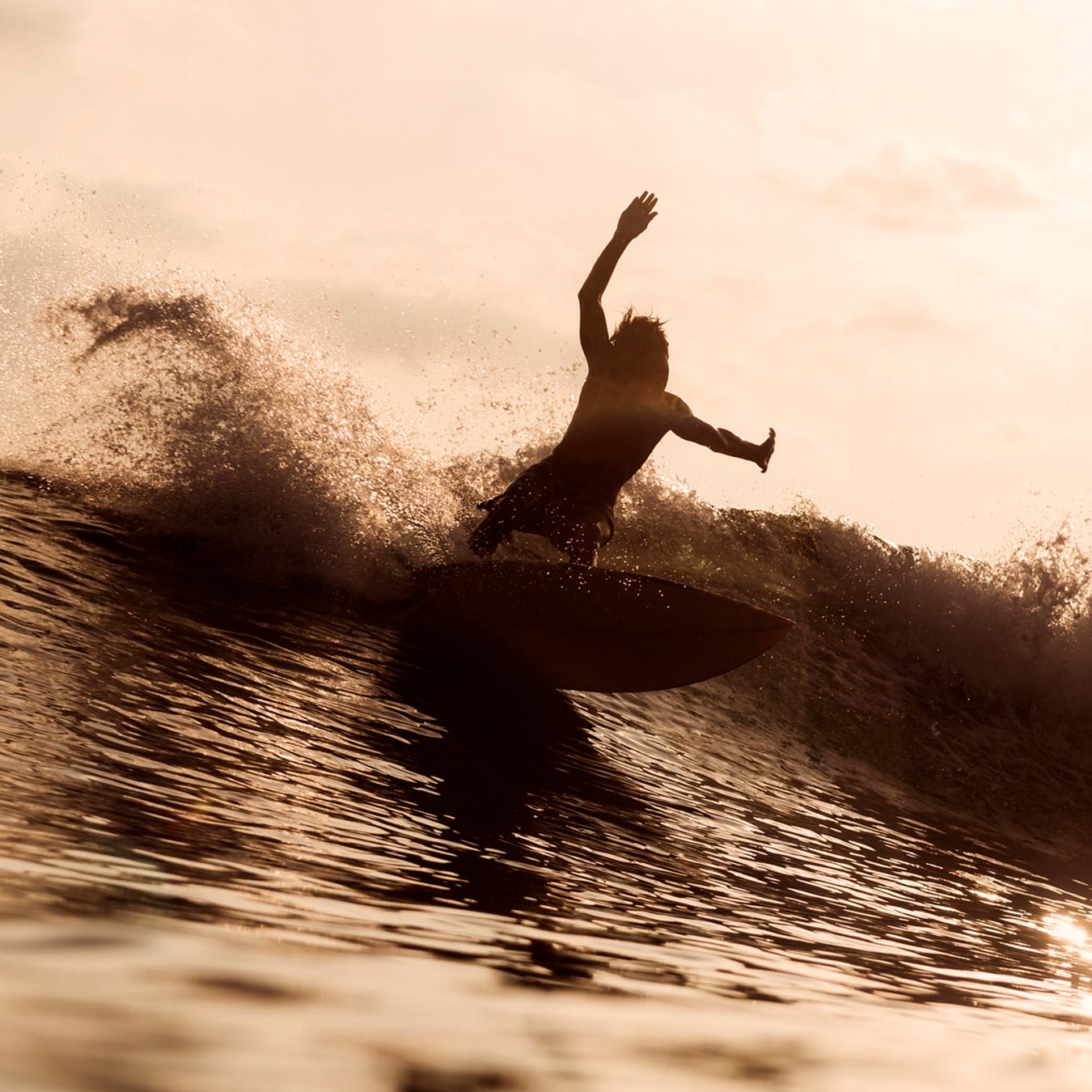My love of surf films goes far beyond the heart-pumping footage of surfers getting barreled and shredding monster waves. I always appreciate hearing them describe what it was like to actually ride the swell. Oftentimes, their soliloquies touch on topics that I care deeply about: spirituality, the connection between brain and body, the emotional release that comes from physical effort, and, ya know, getting so pitted. The very best athletes—think Laird Hamilton, Keala Kennelly, Kelly Slater—can talk for minutes on end about a ride that lasted maaaybe 20 seconds.
That’s why I was determined to interview Puerto Rican surfer Dylan Graves after watching the recent video clip of him surfing a wave for five straight minutes—that’s 300 seconds—along a river in Indonesia. The wave, called “The Bono,” is actually a tidal bore that flows up the Kampar river in Sumatra. The water is pulled along by the gravitational pull of the moon, and the wave it creates just goes on and on and on.
So, how did Graves describe a wave ride that lasted that long?
“It was an insane experience—people talk about the ‘flow state’ during a ride and I had that, only it just went on forever,” Graves told me. “With tidal bores the whole reason you’re able to surf is your spot on the planet at that very moment. So really, you’re in synch with the moon. You have this cosmic connection that makes the ride feel more grand. I felt like I had this antenna up that was picking up on the frequency of the wave. And I was doing what anyone would do with a wave like that—ride the shit out of it.”

During the clip you can see him make 46 different turns on the wave, which according to several sites could be a new Guinness Record.
Graves, 37, told me he had no intentions of pursuing a record ride at The Bono. Instead, he was indulging in his relatively newfound interest in the tidal bore phenomenon—waves that are created when the rising tide pushes up against a river current. Traditional ocean waves break on a reef or a sandbar, and even the longest ones barely last longer than a minute. Peru’s “Chicama,” believed to be the longest breaking ocean wave, covers a distance of 2.5 miles, and a lucky surfer might be up for four minutes.
Tidal bores can last much longer. But unlike ocean waves, they happen just twice a day, and often just one of those swells is ridable. The season for riding these waves is often short, and determined by the combination of the lunar cycle, height of the water, and shape of the river bottom.
Graves says the surf world has identified approximately 60 bores on the planet. He first got a taste for the experience in 2018 on the Severn River in Southwestern England, where the tide creates a rideable wave in the funnel-shaped Bristol Channel.
“It was such a different experience from riding a normal ocean wave that I fell in love with tidal bores,” Graves says. “I found out about the subculture of surfers who only ride tidal bores, and they just look at wave riding differently, and as a surfer the whole thing lit me up.”
He was hooked, and he marveled at the small community of surfers who coalesced around these unusual waves. Surfers on tidal bores and rivers often see how long they can stand on the wave—rides last minutes and sometimes even over an hour.
Graves expanded his focus from ocean waves to tidal bores and even river waves. He traveled to Wyoming and surfed the Lunch Counter rapid on the Snake River. He rode the famed French bore near Bordeaux on the River Garonne called “Le Mascaret”. During the COVID-19 pandemic, he got the idea to surf The Bono. What enticed him about the wave was how the river bottom and tide created seven distinct peaks, which locals call “Seven Ghosts.”
“The tides go over sand bars and make all of these unique shapes, and the wave speeds up and then slows down and makes all of these secondary waves behind it,” he said. “The sand is always shifting and the river has gotten wider over the years, so when you surf it, it’s really the only way that wave will ever be.”
It’s also incredibly remote, and requires a three-hour boat ride from the nearest town. Graves planned his trip for six months and worked with a local surfing guide who takes clients to the bore. The Bono is only rideable from November though March, because that’s when the biggest tide of the day hits when the sun is out.
The elusive nature of these bores is why Graves believes they will continue to attract a niche community of surfers. But for those who are willing to travel to them and wait for that special moment, the payoff is huge. Graves says he had “that glow” after his five-minute ride.
“It felt similar to getting a really special wave anywhere,” he says. “It feels like you were chosen by such a powerful force that is so raw that you can’t help but feel this crazy lift. It’s like the fountain of youth or something. I think that glow will last the rest of my life.”

